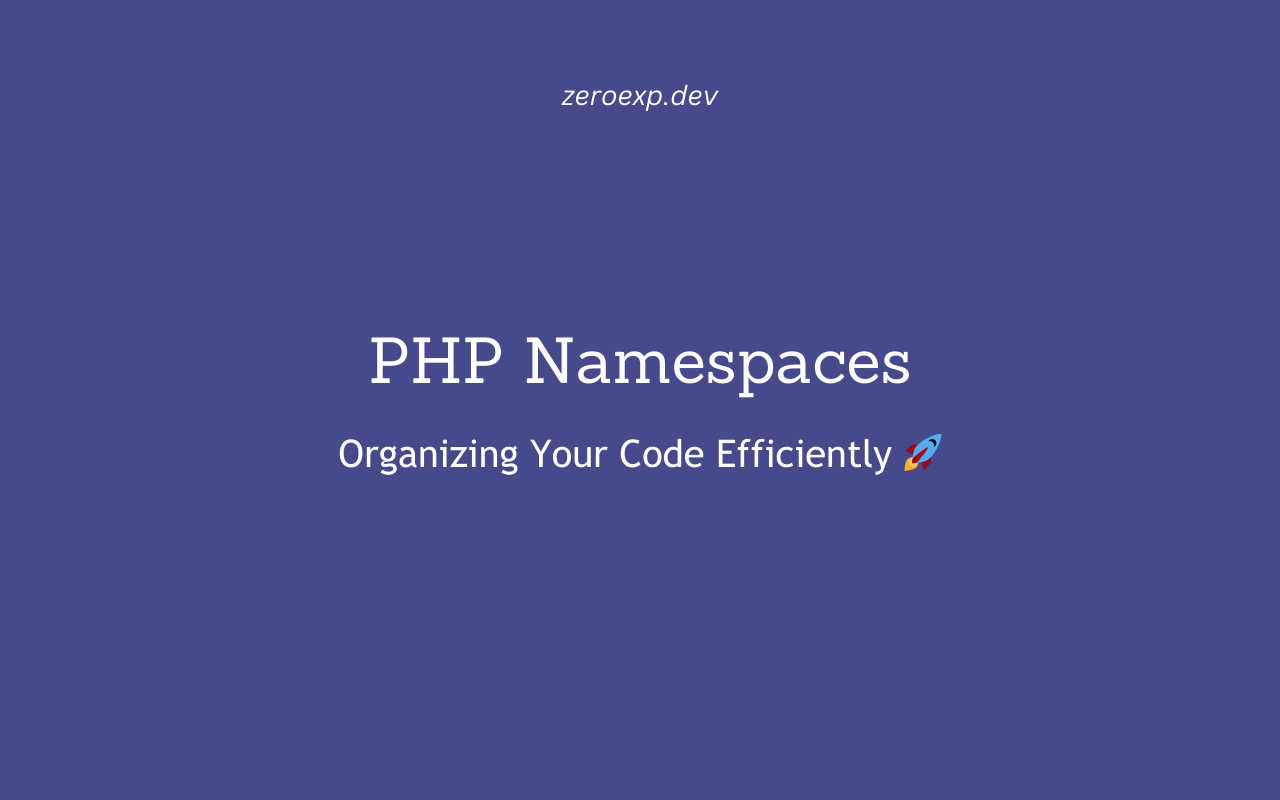As your PHP projects grow, managing multiple classes, functions, and constants becomes chaotic. This is where PHP namespaces come in—they help organize your code, prevent name conflicts, and keep everything structured.
🎯 In this guide, you’ll learn:
✅ What namespaces are and why they’re useful
✅ How to declare and use namespaces
✅ How to use the use keyword for easier access
✅ How to autoload classes with Composer
✅ A real-world example of namespaces in action
Let’s get started! 🚀
1️⃣ What Are PHP Namespaces?
Namespaces in PHP group related classes, functions, and constants together.
🔹 Without namespaces:
- You might accidentally override classes from third-party libraries.
- Your project files can become cluttered with similar class names.
🔹 With namespaces:
- You can use the same class name in different parts of your project without conflicts.
- Your code is more readable and manageable.
2️⃣ Declaring a Namespace in PHP
To declare a namespace, use the namespace keyword at the top of your file.
Example: Defining a Namespace
<?php
namespace App\Models; // Declaring a namespace
class User {
public function getName() {
return "Zero Dev";
}
}
?>
🔥 What’s happening?
✅ The namespace is App\Models.
✅ The User class now belongs to App\Models.
✅ This prevents conflicts if another User class exists in a different namespace.
3️⃣ Using Namespaces
Once you've declared a namespace, you need to refer to it correctly when using the class.
Example: Accessing a Namespaced Class
<?php
require "User.php"; // Include the file
$user = new App\Models\User(); // Accessing the class
echo $user->getName();
?>
🔥 Why use namespaces?
✅ Prevents naming conflicts.
✅ Keeps code modular and organized.
4️⃣ Using the use Keyword (Importing Namespaces)
Typing App\Models\User() every time is annoying. Instead, use the use keyword!
Example: Importing a Namespace
<?php
require "User.php";
use App\Models\User; // Importing the User class
$user = new User(); // No need to type full namespace
echo $user->getName();
?>
🔥 What happens?
✅ use App\Models\User; makes the class accessible without the full namespace.
✅ The code is shorter and cleaner.
5️⃣ Defining Multiple Namespaces in One File
You can define multiple namespaces in a single file, but it’s not recommended for large projects.
<?php
namespace App\Models;
class User {
public function getRole() {
return "Admin";
}
}
namespace App\Services;
class Auth {
public function login() {
return "Logging in...";
}
}
?>
🔥 Why avoid this?
❌ Harder to maintain in large projects.
✅ Use separate files instead!
6️⃣ Using Subnamespaces
Namespaces can be nested to create a hierarchical structure.
Example: Using Subnamespaces
<?php
namespace App\Controllers\Admin;
class Dashboard {
public function show() {
return "Admin Dashboard";
}
}
?>
🔥 Why use subnamespaces?
✅ Keeps code organized (e.g., App\Controllers\Admin\Dashboard).
✅ Avoids conflicts (e.g., a Dashboard class in different parts of the app).
7️⃣ Autoloading Namespaces with Composer
Manually including files (require "file.php";) is a pain. Instead, let’s use Composer autoloading.
Step 1: Install Composer (if you haven’t)
Run this in your terminal:
composer init
composer require
Step 2: Define Autoloading in composer.json
Modify composer.json:
{
"autoload": {
"psr-4": {
"App\\": "src/"
}
}
}
Step 3: Run Composer Autoload Command
composer dump-autoload
Step 4: Use Autoloading in PHP
<?php
require "vendor/autoload.php";
use App\Models\User;
$user = new User();
echo $user->getName();
?>
🔥 What happens?
✅ No need for manual require statements.
✅ Composer automatically loads classes from the src/ directory.
🎯 Mini Project: Namespaced User Management System
Let’s build a real-world user management system using namespaces.
1️⃣ src/Models/User.php
<?php
namespace App\Models;
class User {
public function getName() {
return "Zero Dev";
}
}
?>
2️⃣ src/Controllers/UserController.php
<?php
namespace App\Controllers;
use App\Models\User;
class UserController {
public function showUser() {
$user = new User();
return "User: " . $user->getName();
}
}
?>
3️⃣ index.php (Main file)
<?php
require "vendor/autoload.php";
use App\Controllers\UserController;
$controller = new UserController();
echo $controller->showUser();
?>
🔥 What’s happening?
✅ User model is inside App\Models.
✅ UserController uses User without requiring files manually.
✅ Composer autoloads everything!
🚀 Final Thoughts
Now you know how to organize your PHP code using namespaces!
✅ Prevent name conflicts
✅ Keep your project structured
✅ Use Composer to autoload classes
👉 Next: Working with PHP Traits and Magic Methods
Happy coding! 🎉🚀
